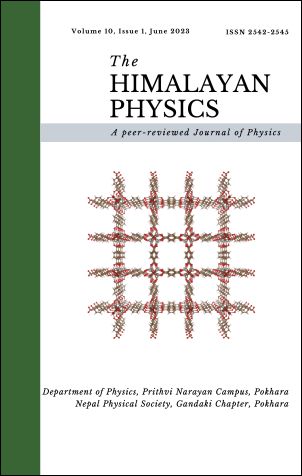Adsorption of toxic gases by metal-organic frameworks
DOI:
https://doi.org/10.3126/hp.v10i1.55272Abstract
Along with global economic development and population growth, the discharge of highly toxic and corrosive anthropogenic byproducts into the atmosphere or aquatic habitats creates a serious threat to human health. In order to remove such byproducts, more attention should be paid to innovative materials with high uptake capacity and performance. Metal-organic frameworks (MOFs) are crystalline, porous, hybrid materials that are made up of organic ligands as linkers and metal cluster-based nodes. Because of their beneficial features such as their large surface area, tailorable pore sizes, structural diversity, catalytic activity, and wide range of chemical and physical properties, MOFs offer significant potential as adsorbents. As a result, these materials have drawn a significant amount of attention for the capture and/or detoxification of hazardous and toxic chemicals. This review will focus on recent advancements on MOF based experimental and computational studies related to the capture of toxic gases including hydrogen sulfide (H2S), ammonia (NH3) sulfur dioxide (SO2) carbon monoxide (CO), and nitrogen oxides (NOx).
Downloads
Downloads
Published
How to Cite
Issue
Section
License
This license enables reusers to distribute, remix, adapt, and build upon the material in any medium or format for noncommercial purposes only, and only so long as attribution is given to the creator. If you remix, adapt, or build upon the material, you must license the modified material under identical terms.




